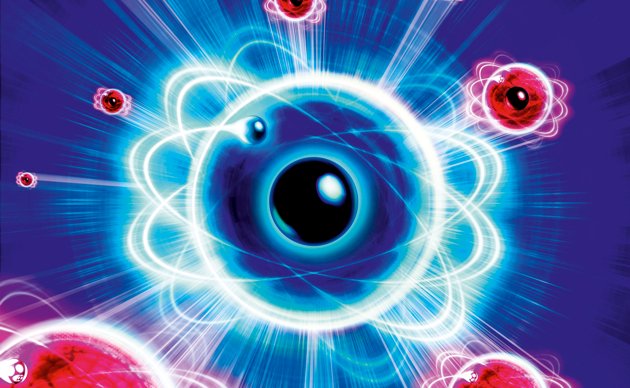Bizarre Antimatter Looks Surprisingly Like Regular Matter.
For the first time, physicists have shown that atoms of antimatter appear to give off the same kind of light that atoms of regular matter do when illuminated with lasers, a new study finds.
More precise measurements of this emitted light could unearth clues that might finally help solve the mystery of why there is so much less antimatter than normal matter in the universe, researchers say.
For every particle of normal matter, there is an antimatter counterpart with the same mass but the opposite electrical charge. The antiparticles of the electron and proton, for instance, are the positron and antiproton, respectively.
When a particle meets its antiparticle, they annihilate each other, giving off a burst of energy. A gram of antimatter annihilating a gram of matter would release about twice the energy as the nuclear bomb dropped on Hiroshima, Japan. (You don't have to worry about antimatter bombs popping up anytime soon; researchers are very far from creating anywhere near a gram of antimatter.)
It remains a mystery why there is so much more matter than antimatter in the universe. The Standard Model of particle physics - the best description yet of how the basic building blocks of the universe behave - suggests that the Big Bang should have created equal amounts of matter and antimatter.
Scientists would like to learn more about antimatter to see if it behaves differently from matter in a way that could help solve the puzzle of why the universe has so little antimatter.
One key set of experiments would involve shining lasers on antimatter atoms, which can absorb and emit light much like atoms of regular matter. If antihydrogen atoms emitted a different spectrum of light than hydrogen atoms, such spectral differences could yield insights on other ways matter and antimatter differ, the researchers said.
Now, for the first time, scientists have used lasers to carry out a spectral analysis of antihydrogen atoms.
"I like to call this the Holy Grail of antimatter physics,"said study co-author Jeffrey Hangst, a physicist at Aarhus University in Denmark. "I've been working for more than 20 years to make this possible, and this project has finally come together after many difficult steps."
The researchers experimented with antihydrogen, which is the simplest atom of antimatter, just as hydrogen is the simplest atom of regular matter. Antihydrogen atoms each consist of one antiproton and one positron.
Creating enough antimatter for researchers to examine has proven highly challenging. To create antihydrogen atoms, the researchers mixed clouds of about 90,000 antiprotons with clouds of about 1.6 million positrons (or antielectrons), yielding about 25,000 antihydrogen atoms per attempt using the ALPHA-2 apparatus, which is an antimatter generation and trapping system, at the European Organization for Nuclear Research (CERN) in Switzerland.
